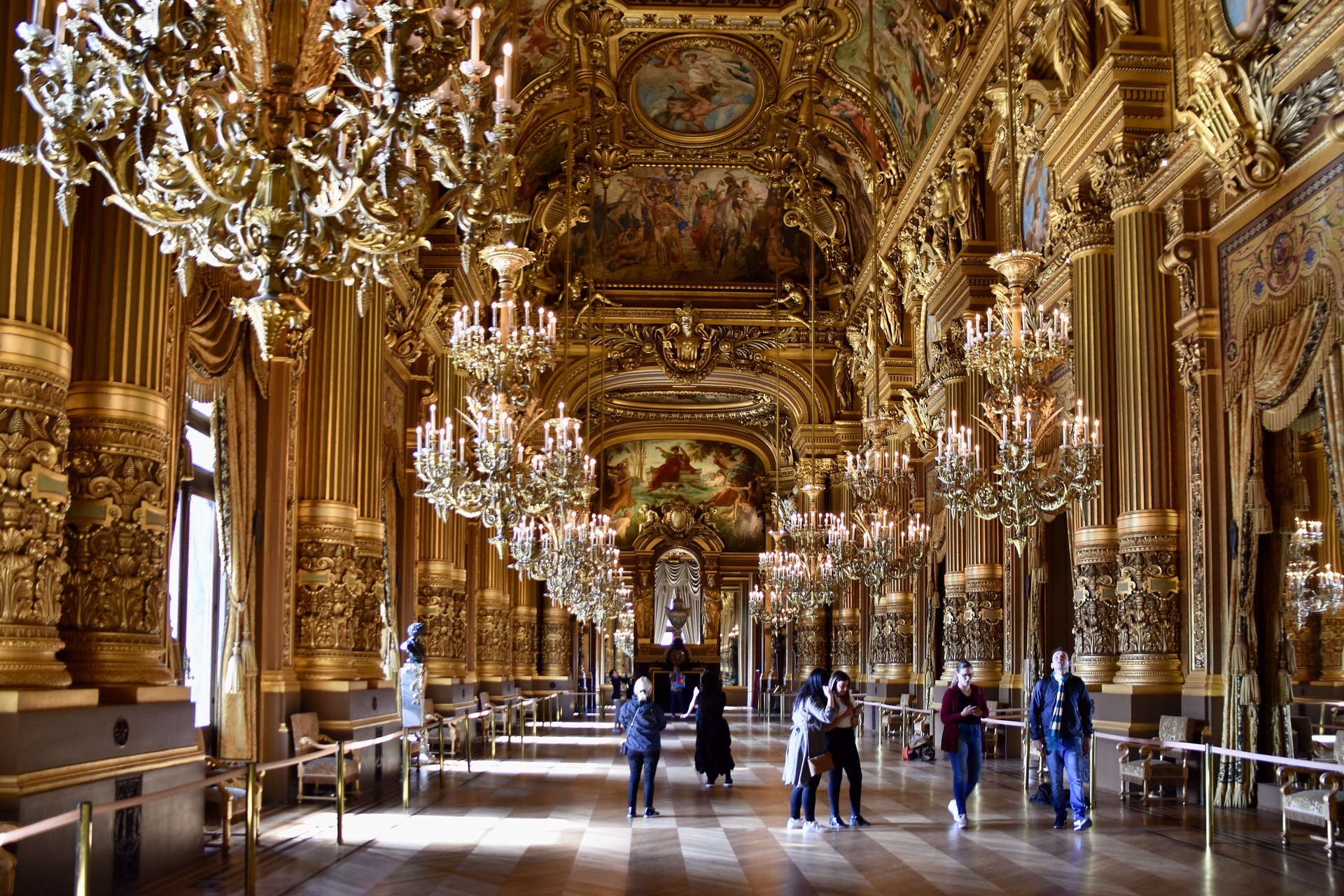Interior design is the art and science of enhancing the interior of a building to achieve a healthier and more aesthetically pleasing environment for the people using the space. An interior designer is someone who plans, researches, coordinates, and manages such enhancement projects. Interior design is a multifaceted profession that includes conceptual development, space planning, site inspections, programming, research, communicating with the stakeholders of a project, construction management, and execution of the design.
History and current terms
Typical interior of one of the houses in the Folk Architecture Reservation in Vlkolínec (Slovakia)
In the past, interiors were put together instinctively as a part of the process of building.
The profession of interior design has been a consequence of the development of society and the complex architecture that has resulted from the development of industrial processes.
The pursuit of effective use of space, user well-being and functional design has contributed to the development of the contemporary interior design profession. The profession of interior design is separate and distinct from the role of interior decorator, a term commonly used in the US; the term is less common in the UK, where the profession of interior design is still unregulated and therefore, strictly speaking, not yet officially a profession.
In ancient India, architects would also function as interior designers. This can be seen from the references of Vishwakarma the architect—one of the gods in Indian mythology. In these architects’ design of 17th-century Indian homes, sculptures depicting ancient texts and events are seen inside the palaces, while during the medieval times wall art paintings were a common feature of palace-like mansions in India commonly known as havelis. While most traditional homes have been demolished to make way to modern buildings, there are still around 2000 havelis in the Shekhawati region of Rajashtan that display wall art paintings.
In ancient Egypt, “soul houses” (or models of houses) were placed in tombs as receptacles for food offerings. From these, it is possible to discern details about the interior design of different residences throughout the different Egyptian dynasties, such as changes in ventilation, porticoes, columns, loggias, windows, and doors.
Painting interior walls has existed for at least 5,000 years, with examples found as far north as the Ness of Brodgar, as have templated interiors, as seen in the associated Skara Brae settlement. It was the Greeks, and later Romans who added co-ordinated, decorative mosaics floors, and templated bath houses, shops, civil offices, Castra (forts) and temple, interiors, in the first millennia BC. With specialised guilds dedicated to producing interior decoration, and formulaic furniture, in buildings constructed to forms defined by Roman architects, such as Vitruvius: De architectura, libri decem (The Ten Books on Architecture).
Throughout the 17th and 18th century and into the early 19th century, interior decoration was the concern of the homemaker, or an employed upholsterer or craftsman who would advise on the artistic style for an interior space. Architects would also employ craftsmen or artisans to complete interior design for their buildings.
Commercial interior design and management
In the mid-to-late 19th century, interior design services expanded greatly, as the middle class in industrial countries grew in size and prosperity and began to desire the domestic trappings of wealth to cement their new status. Large furniture firms began to branch out into general interior design and management, offering full house furnishings in a variety of styles. This business model flourished from the mid-century to 1914, when this role was increasingly usurped by independent, often amateur, designers. This paved the way for the emergence of the professional interior design in the mid-20th century.
In the 1950s and 1960s, upholsterers began to expand their business remits. They framed their business more broadly and in artistic terms and began to advertise their furnishings to the public. To meet the growing demand for contract interior work on projects such as offices, hotels, and public buildings, these businesses became much larger and more complex, employing builders, joiners, plasterers, textile designers, artists, and furniture designers, as well as engineers and technicians to fulfill the job. Firms began to publish and circulate catalogs with prints for different lavish styles to attract the attention of expanding middle classes.
As department stores increased in number and size, retail spaces within shops were furnished in different styles as examples for customers. One particularly effective advertising tool was to set up model rooms at national and international exhibitions in showrooms for the public to see. Some of the pioneering firms in this regard were Waring & Gillow, James Shoolbred, Mintons, and Holland & Sons. These traditional high-quality furniture making firms began to play an important role as advisers to unsure middle class customers on taste and style, and began taking out contracts to design and furnish the interiors of many important buildings in Britain.
This type of firm emerged in America after the Civil War. The Herter Brothers, founded by two German émigré brothers, began as an upholstery warehouse and became one of the first firms of furniture makers and interior decorators. With their own design office and cabinet-making and upholstery workshops, Herter Brothers were prepared to accomplish every aspect of interior furnishing including decorative paneling and mantels, wall and ceiling decoration, patterned floors, and carpets and draperies.
A pivotal figure in popularizing theories of interior design to the middle class was the architect Owen Jones, one of the most influential design theorists of the nineteenth century. Jones’ first project was his most important—in 1851, he was responsible for not only the decoration of Joseph Paxton’s gigantic Crystal Palace for the Great Exhibition but also the arrangement of the exhibits within. He chose a controversial palette of red, yellow, and blue for the interior ironwork and, despite initial negative publicity in the newspapers, was eventually unveiled by Queen Victoria to much critical acclaim. His most significant publication was The Grammar of Ornament (1856), in which Jones formulated 37 key principles of interior design and decoration.
Jones was employed by some of the leading interior design firms of the day; in the 1860s, he worked in collaboration with the London firm Jackson & Graham to produce furniture and other fittings for high-profile clients including art collector Alfred Morrison as well as Ismail Pasha, Khedive of Egypt.
In 1882, the London Directory of the Post Office listed 80 interior decorators. Some of the most distinguished companies of the period were Crace, Waring & Gillowm and Holland & Sons; famous decorators employed by these firms included Thomas Edward Collcutt, Edward William Godwin, Charles Barry, Gottfried Semper, and George Edmund Street.
Transition to professional interior design
By the turn of the 20th century, amateur advisors and publications were increasingly challenging the monopoly that the large retail companies had on interior design. English feminist author Mary Haweis wrote a series of widely read essays in the 1880s in which she derided the eagerness with which aspiring middle-class people furnished their houses according to the rigid models offered to them by the retailers. She advocated the individual adoption of a particular style, tailor-made to the individual needs and preferences of the customer:”One of my strongest convictions, and one of the first canons of good taste, is that our houses, like the fish’s shell and the bird’s nest, ought to represent our individual taste and habits.
The move toward decoration as a separate artistic profession, unrelated to the manufacturers and retailers, received an impetus with the 1899 formation of the Institute of British Decorators; with John Dibblee Crace as its president, it represented almost 200 decorators around the country. By 1915, the London Directory listed 127 individuals trading as interior decorators, of which 10 were women. Rhoda and Agnes Garrett were the first women to train professionally as home decorators in 1874. The importance of their work on design was regarded at the time as on a par with that of William Morris. In 1876, their work – Suggestions for House Decoration in Painting, Woodwork and Furniture – spread their ideas on artistic interior design to a wide middle-class audience.
By 1900, the situation was described by The Illustrated Carpenter and Builder:”Until recently when a man wanted to furnish he would visit all the dealers and select piece by piece of furniture ….Today he sends for a dealer in art furnishings and fittings who surveys all the rooms in the house and he brings his artistic mind to bear on the subject.”
In America, Candace Wheeler was one of the first woman interior designers and helped encourage a new style of American design. She was instrumental in the development of art courses for women in a number of major American cities and was considered a national authority on home design. An important influence on the new profession was The Decoration of Houses, a manual of interior design written by Edith Wharton with architect Ogden Codman in 1897 in America. In the book, the authors denounced Victorian-style interior decoration and interior design, especially those rooms that were decorated with heavy window curtains, Victorian bric-a-brac, and overstuffed furniture. They argued that such rooms emphasized upholstery at the expense of proper space planning and architectural design and were, therefore, uncomfortable and rarely used. The book is considered a seminal work, and its success led to the emergence of professional decorators working in the manner advocated by its authors, most notably Elsie de Wolfe.
Elsie De Wolfe was one of the first interior designers. Rejecting the Victorian style she grew up with, she chose a more vibrant scheme, along with more comfortable furniture in the home. Her designs were light, with fresh colors and delicate Chinoiserie furnishings, as opposed to the Victorian preference of heavy, red drapes and upholstery, dark wood and intensely patterned wallpapers. Her designs were also more practical; she eliminated the clutter that occupied the Victorian home, enabling people to entertain more guests comfortably. In 1905, de Wolfe was commissioned for the interior design of the Colony Club on Madison Avenue; its interiors garnered her recognition almost over night. She compiled her ideas into her widely read 1913 book, The House in Good Taste.
In England, Syrie Maugham became a legendary interior designer credited with designing the first all-white room. Starting her career in the early 1910s, her international reputation soon grew; she later expanded her business to New York City and Chicago. Born during the Victorian Era, a time characterized by dark colors and small spaces, she instead designed rooms filled with light and furnished in multiple shades of white and mirrored screens. In addition to mirrored screens, her trademark pieces included: books covered in white vellum, cutlery with white porcelain handles, console tables with plaster palm-frond, shell, or dolphin bases, upholstered and fringed sleigh beds, fur carpets, dining chairs covered in white leather, and lamps of graduated glass balls, and wreaths.
Expansion
The interior design profession became more established after World War II. From the 1950s onwards, spending on the home increased. Interior design courses were established, requiring the publication of textbooks and reference sources. Historical accounts of interior designers and firms distinct from the decorative arts specialists were made available. Organisations to regulate education, qualifications, standards and practices, etc. were established for the profession.
Interior design was previously seen as playing a secondary role to architecture. It also has many connections to other design disciplines, involving the work of architects, industrial designers, engineers, builders, craftsmen, etc. For these reasons, the government of interior design standards and qualifications was often incorporated into other professional organisations that involved design. Organisations such as the Chartered Society of Designers, established in the UK in 1986, and the American Designers Institute, founded in 1938, governed various areas of design.
It was not until later that specific representation for the interior design profession was developed. The US National Society of Interior Designers was established in 1957, while in the UK the Interior Decorators and Designers Association was established in 1966. Across Europe, other organisations such as The Finnish Association of Interior Architects (1949) were being established and in 1994 the International Interior Design Association was founded.
Ellen Mazur Thomson, author of Origins of Graphic Design in America (1997), determined that professional status is achieved through education, self-imposed standards and professional gate-keeping organizations. Having achieved this, interior design became an accepted profession.
Interior decorators and interior designers
Interior design in a restaurant
Interior design is the art and science of understanding people’s behavior to create functional spaces, that are aesthetically pleasing, within a building. Decoration is the furnishing or adorning of a space with decorative elements, sometimes complemented by advice and practical assistance. In short, interior designers may decorate, but decorators do not design.
Interior designer
Interior designer implies that there is more of an emphasis on planning, functional design and the effective use of space, as compared to interior decorating. An interior designer in fine line design can undertake projects that include arranging the basic layout of spaces within a building as well as projects that require an understanding of technical issues such as window and door positioning, acoustics, and lighting. Although an interior designer may create the layout of a space, they may not alter load-bearing walls without having their designs stamped for approval by a structural engineer. Interior designers often work directly with architects, engineers and contractors.
Interior designers must be highly skilled in order to create interior environments that are functional, safe, and adhere to building codes, regulations and ADA requirements. They go beyond the selection of color palettes and furnishings and apply their knowledge to the development of construction documents, occupancy loads, healthcare regulations and sustainable design principles, as well as the management and coordination of professional services including mechanical, electrical, plumbing, and life safety—all to ensure that people can live, learn or work in an innocuous environment that is also aesthetically pleasing.
Someone may wish to specialize and develop technical knowledge specific to one area or type of interior design, such as residential design, commercial design, hospitality design, healthcare design, universal design, exhibition design, furniture design, and spatial branding. Interior design is a creative profession that is relatively new, constantly evolving, and often confusing to the public. It is not an artistic pursuit and relies on research from many fields to provide a well-trained understanding of how people are influenced by their environments.
Color in interior design
Color is a powerful design tool in decoration, as well as in interior design, which is the art of composing and coordinating colors together to create a stylish scheme on the interior architecture of the space.
It is essential to interior designers to acquire a deep experience with colors, understand their psychological effects, and understand the meaning of each color in different locations and situations in order to create suitable combinations for each place.
Combining colors together could result in creating a state of mind as seen by the observer, and could eventually result in positive or negative effects on them. Colors make the room feel either more calm, cheerful, comfortable, stressful, or dramatic. Color combinations make a tiny room seem larger or smaller. So it is for the Interior design profession to choose the appropriate colors for a place towards achieving how clients would want to look at, and feel in, that space.
Profession
Education
There are various paths that one can take to become a professional interior designer. All of these paths involve some form of training. Working with a successful professional designer is an informal method of training and has previously been the most common method of education. In many states, however, this path alone cannot lead to licensing as a professional interior designer. Training through an institution such as a college, art or design school or university is a more formal route to professional practice.
In many countries, several university degree courses are now available, including those on interior architecture, taking three or four years to complete.
A formal education program, particularly one accredited by or developed with a professional organization of interior designers, can provide training that meets a minimum standard of excellence and therefore gives a student an education of a high standard. There are also university graduate and Ph.D. programs available for those seeking further training in a specific design specialization (i.e. gerontological or healthcare design) or those wishing to teach interior design at the university level.
Working conditions
There are a wide range of working conditions and employment opportunities within interior design. Large and tiny corporations often hire interior designers as employees on regular working hours. Designers for smaller firms and online renovation platforms usually work on a contract or per-job basis. Self-employed designers, who made up 32% of interior designers in 2020, usually work the most hours. Interior designers often work under stress to meet deadlines, stay on budget, and meet clients’ needs.
In some cases, licensed professionals review the work and sign it before submitting the design for approval by clients or construction permitting. The need for licensed review and signature varies by locality, relevant legislation, and scope of work. Their work can involve significant travel to visit different locations. However, with technology development, the process of contacting clients and communicating design alternatives has become easier and requires less travel. They also renovate a space to satisfy the specific taste for a client.



